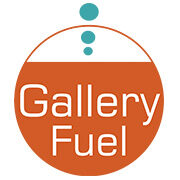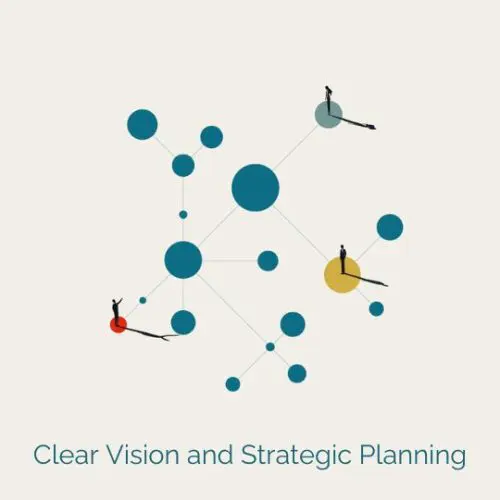Think of your art gallery’s annual strategic plan as a roadmap guiding you toward your future vision for the gallery. This plan is more than a set of goals; it communicates your growth expectations to your team, setting the tone for collective success. By defining clear objectives and establishing a timeline with milestone dates, you create a structure that ensures accountability and allows for celebrating achievements by year’s end.
Creating this planning document every year has so many benefits. For example, an annual plan helps you organize the year more effectively, manage your time, and focus on big-picture goals. A well-crafted plan provides stability and direction for art galleries, where priorities often shift due to exhibitions, artist collaborations, or market demands. Another benefit is by planning proactively, you can avoid overextending your team, ensuring that projects are not only completed but exceed expectations. This approach ensures resources are used efficiently while allowing room for flexibility when needed. Now, doesn’t that sound nice?
Finally, annual planning fosters a positive and collaborative team environment. When leadership involves staff, artists, and even vendors in the planning process, everyone feels more invested in the gallery’s success. This inclusion cultivates a sense of pride and unity, aligning everyone toward the same inspiring vision for the gallery’s future.
Key Elements for Structuring a Successful Art Gallery’s Annual Strategic Plan
Plan
Creating a successful annual plan for your art gallery requires a clear structure and intentional focus. This plan acts as a strategic blueprint to guide your gallery’s growth, helping you align your team, streamline operations, and prioritize goals that matter most. While it’s tempting to tackle every opportunity, an effective plan requires thoughtful evaluation of your gallery’s current state and realistic goal-setting across key areas of your business.
The following five structural factors provide a framework for building an impactful annual plan. These steps will help you assess your gallery’s current state, define and prioritize meaningful goals, and create a roadmap to achieve them while fostering team collaboration and operational efficiency.
- Assess the Current State of the Gallery: The gallery sector is evolving. Where do you fit in today? Honestly evaluate your business’s current condition, considering leadership, marketing, finance, sales, artist management, customer relationships, operational efficiency, company culture, hiring practices, etc.
- Create and Prioritize Annual Goals: You may have many ideas for developing the gallery, but you can’t do it all at once. Structure your plan by setting annual goals in four categories: Sales, Marketing, Exhibitions (live and virtual), and Operations. This helps prioritize for maximum impact on growth and success.
- Break Down Goals into Quarterly and Monthly Actions: Planning comes in here. Break your big-picture goals into smaller, manageable quarterly and monthly actions for each category. This reduces overwhelm and boosts productivity.
- Empower Staff: Enable gallery staff to take ownership of important tasks. They need tools to track progress and overcome obstacles. Your plan should identify necessary tools and resources, some of which you may need to invest in.
- Document Core Processes: Document new processes so your gallery runs efficiently and is less reliant on leadership or individuals. This strategy helps streamline operations.
I suggest creating goals specifically for the different areas of your business, such as marketing, sales, events, finance, and operations. If that makes sense for your gallery, you might also want to create goals for your artist roster. For example, if you’re just starting out or your gallery program is evolving, you might want to consider creating goals for that.
List your annual goals for each area and then identify the top three most important goals to help prioritize your focus. By setting goals in these areas of your business, you can align efforts, track progress, and work towards success across your whole business. They all work in tandem.
Structuring Quarterly and Monthly Goals
With your big annual goals defined, you might be feeling a little excited and overwhelmed. So next make achieving your annual goals more manageable. Each annual goal should be reviewed to determine the steps or milestones required to achieve it, and these become your quarterly goals. For example, if the annual goal is to increase gallery sales by 20%, the first quarter might focus on launching a new online store on the gallery’s website, while the second quarter could center on hosting exclusive collector events.
To ensure these milestones are actionable, each should follow the SMART framework, with specific metrics and deadlines for tracking progress. SMART is an acronym that stands for Specific, Measurable, Actionable/Attainable, Realistic (that’s a big one), and Time-bound (you need to set a deadline).
Another essential practice is aligning quarterly goals with the gallery’s natural flow and priorities. When deciding how to distribute goals, consider seasonality, busy periods, and strategic events, such as art fairs or exhibitions. This approach ensures that no quarter is overloaded and that objectives are realistic within the gallery’s operating schedule.
From here, you could take it even further if you like. Once quarterly goals are established, break them into smaller monthly and weekly tasks. For example, if the Q1 goal is to launch an online store, January might focus on selecting a vendor and approving a design, February on creating content and testing, and March on a soft launch and promotion. Assign these tasks to team members with clear deadlines to foster accountability and keep the momentum going. This structured approach ensures measurable and sustainable progress, helping the team stay focused on achieving annual objectives.
Whether or not you get this granular with your planning depends on your work style and the number of people involved in implementing the plan.
Consistency and Flexibility: Keys to Strategic Success
Maintaining momentum in executing an annual strategic plan is challenging, but consistency is key to achieving long-term goals. Organize your days, weeks, and months meticulously by using a spreadsheet, planner, or project management app. Whatever works best for you and the team is the right tool.
Embedding flexibility into the strategic plan helps the gallery adapt to unforeseen changes without losing momentum. I recommend you conduct regular progress reviews at the end of each quarter to provide opportunities to celebrate wins, identify roadblocks, and adjust the plan based on real-world challenges or evolving priorities. Life happens for better or worse, and you will likely need to pivot. Monthly meetings to discuss the status of initiatives allow the whole gallery staff to share insights, raise concerns, and collaborate on solutions.
These touchpoints also reinforce accountability and clarify how individual roles contribute to the gallery’s broader vision.
To the Point
A written annual strategic plan for your art gallery keeps you focused on goals and future vision, enhances leadership, and prioritizes time, money, and resources. While planning, many find it helpful to move away from daily distractions and adopt a strategic mindset. Honest self-evaluation is crucial to identifying obstacles. Review your gallery’s current situation and set marketing, sales, events, finances, and operations goals.
To achieve your goals, clearly envision your gallery’s future and create an annual strategic plan that will ask as roadmap to get you there. Consistent action and organization are crucial for success, so use tools and form daily habits that support your plan’s execution.
By prioritizing short-term wins, clear communication, and adaptability, your gallery business can ensure the plan remains actionable and relevant from start to finish.

 Plan
Plan

Leave a Reply